Have you ever wondered what is the proper technique for anchoring a boat? When it comes to boating, one of the most essential skills you can master is anchoring your boat. Whether you’re out for a peaceful day on the water or preparing for a stormy night, knowing what is the proper technique for anchoring a boat is can make a world of difference in keeping your boat safe and secure.
Anchoring might seem straightforward, but it’s an art that requires knowledge and practice. From basic sailboat anchoring techniques to advanced storm anchoring techniques, getting it right ensures that your boat stays where you want it, and you can enjoy your time on the water with peace of mind.
“In this blog post, we’ll guide you through the fundamentals of the proper technique for anchoring a boat, covering everything from the basics to advanced methods. We’ll dive deep into specialized techniques such as shore anchoring techniques and boat beach anchoring techniques, providing you with practical insights to tackle different environments and situations.
Additionally, we’ll explore the psychology behind anchoring techniques, discussing how your mind perceives risk and influences decision-making during anchoring. We’ll also examine the nuances of anchoring from the bow, helping you understand the best practices for positioning and securing your boat. Plus, we’ll offer expert advice on yacht anchoring techniques, giving you the knowledge to anchor larger vessels confidently, no matter the conditions. By the end of this post, you’ll have a comprehensive understanding of anchoring, ensuring you’re well-prepared for any anchoring scenario you may encounter.”
By the end of this post, you’ll be equipped with the knowledge and confidence to anchor like a pro, no matter what type of boat you’re on.
Table of Contents
Why Proper Anchoring Techniques Matter:
Before we dive into the different methods, it’s important to understand why the proper technique for anchoring a boat is so critical. Anchoring your boat correctly is more than just a simple task—it’s a fundamental part of safe boating and plays a key role in ensuring both your safety and the safety of others on the water. A well-anchored boat gives you peace of mind, knowing that your vessel will stay in place, even in challenging conditions.
Proper anchoring helps prevent your boat from drifting into danger, whether that’s due to strong currents, powerful winds, or nearby boats. If your boat is poorly anchored, you risk it drifting into obstacles, other vessels, or even running aground, potentially causing significant damage. Additionally, a drifting boat could collide with other boats or cause an accident, leading to costly repairs, insurance claims, or even legal trouble. These risks can be particularly dangerous in busy marinas or crowded anchorages.
A poorly anchored boat can lead to more than just accidents and damage—it can also endanger the lives of everyone on board and others nearby. In the event of an emergency, like a sudden storm or a change in tides, your boat could become uncontrollable, making it harder for you to react quickly. The security of a properly anchored boat gives you the freedom to relax, enjoy your time on the water, and ensure that you and your passengers remain safe.
It’s essential to understand that proper anchoring isn’t just about preventing your boat from drifting; it’s about keeping your vessel securely in place, no matter how the conditions shift. Whether you’re anchored in calm waters or facing turbulent seas, a securely anchored boat will hold its position, reduce your risk of drifting, and minimize the likelihood of damage or injury. In the event of storms, strong winds, or changing tides, a properly set anchor will give you a stable foundation, providing safety and preventing unnecessary distress.”
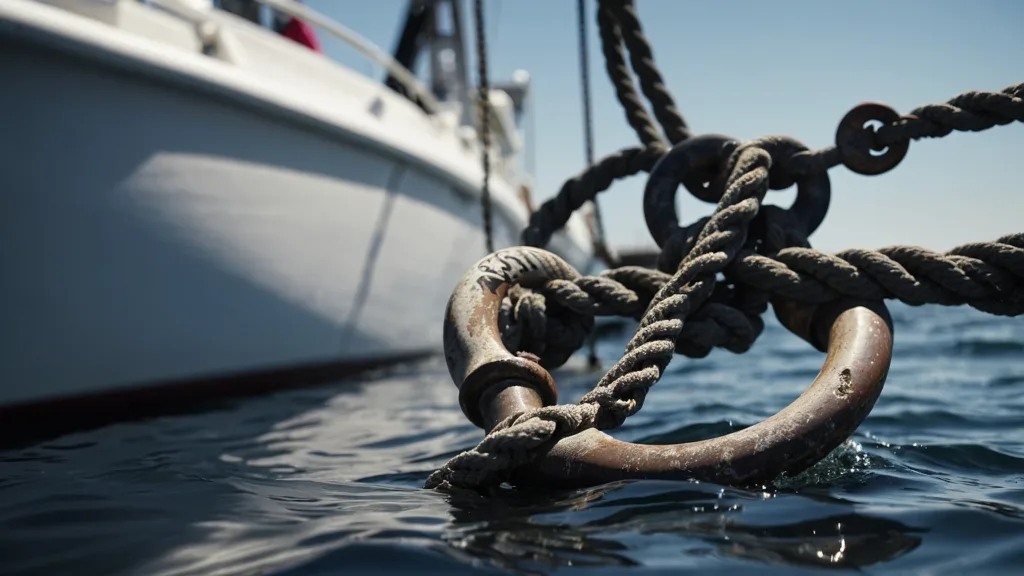
Good anchoring practices not only ensure your safety but also the safety of others on the water. Whether you’re anchoring in calm conditions or navigating a storm, making sure you follow the proper technique for anchoring a boat can save lives and minimize risks. Additionally, if you’re planning on spending a lot of time on your boat—whether for recreation, fishing, or overnight trips—learning the proper technique will help you maintain your vessel’s condition over time. Correctly anchoring your boat can also reduce wear and tear on the anchor and anchor lines, prolonging the lifespan of your equipment and ensuring your boat is always ready for its next adventure.
The Proper Technique of Anchoring a Boat:
Let’s start with the foundational techniques that everyone should know.
1. Choosing the Right Anchor
The first step in successful anchoring is choosing the right anchor for your boat. The size and type of anchor depend on your boat’s size, the type of bottom (mud, sand, rock), and the weather conditions.
Some common types of anchors include:
- Plow anchors: Best for most types of bottoms, including sand, mud, and gravel.
- Danforth anchors: Ideal for sandy or muddy bottoms, lightweight and easy to stow.
- Bruce anchors: Known for their effectiveness in tough conditions like rocky or weedy bottoms.
2. Determining the Right Anchor Line Length
A common rule of thumb is to use at least 5-7 times the depth of the water to determine how much anchor line you need. For example, if the water is 10 feet deep, you should let out at least 50-70 feet of anchor line. This will help your anchor set properly and prevent the boat from drifting.
3. Anchoring From the Bow
If you’re anchoring from the bow (the front of the boat), the process is simple but requires careful attention. The bow should face into the wind or current, and you’ll need to slowly let the anchor down while maintaining a consistent speed. Once the anchor touches the bottom, let out the right amount of line. As you do this, allow the boat to slowly drift back until it is properly anchored.
4. Setting the Anchor
Once you’ve let out the appropriate amount of line, it’s time to set the anchor. This means ensuring the anchor is firmly embedded in the bottom. You can tell if the anchor is set properly if you reverse your boat gently and feel resistance. If the anchor drags, you may need to adjust the length of the line or reposition your boat.
Also Read : What is an Anchor Handling Tug Supply Vessel (AHTS)? | 10 Ultimate Facts You Must Know
Advanced Anchoring Techniques
Now that you’ve got the basics covered, let’s dive into some advanced anchoring techniques that can make a huge difference, especially in challenging conditions.
1. Storm Anchoring Techniques
When facing rough weather, such as storms, anchoring requires extra care. Here’s how you can get ready:
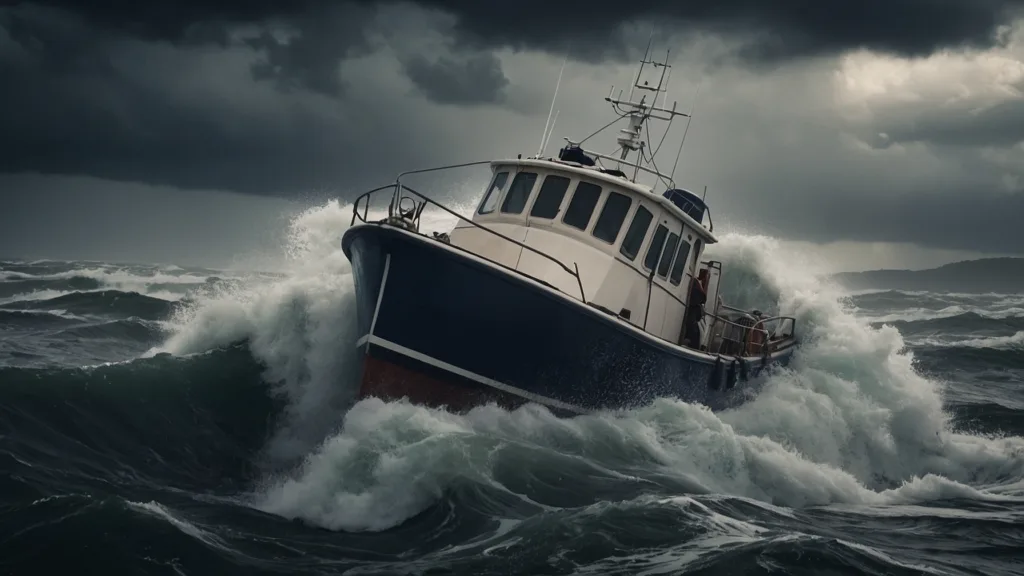
- Choose a Protected Spot: Anchor in a sheltered location to minimize exposure to waves and wind.
- Use a Larger Anchor: In stormy weather, it’s smart to use a larger, more robust anchor than you would in calm conditions.
- Use Multiple Anchors: If possible, deploy a second anchor off the stern (back of the boat) to prevent the boat from swinging too much. This is commonly known as the “storm anchoring technique.
2. Yacht Anchoring Techniques
When anchoring a yacht, you’ll want to pay attention to the following:
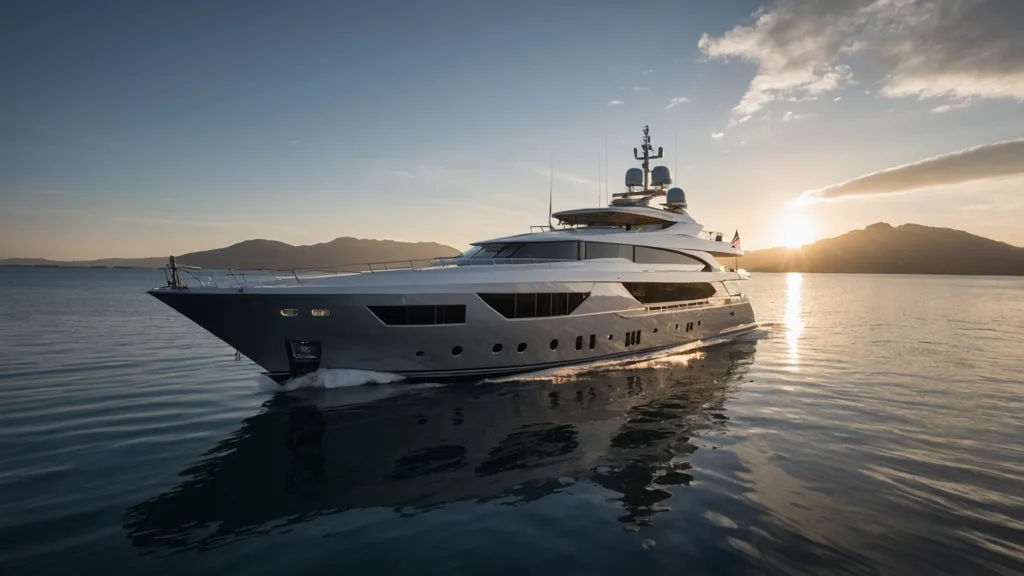
- Anchor Positioning: Larger boats often require more space to swing, so make sure your yacht is anchored in a wide, open area with plenty of clearance from other boats and obstacles.
- Use a Backup Anchor: To avoid getting stuck or drifting in case of anchor failure, it’s wise to deploy a second anchor, especially in high winds.
3. Sailboat Anchoring Techniques
]Sailboats can be trickier to anchor due to their size and the way they interact with the wind. Here are some sailboat anchoring techniques that align with the proper technique for anchoring a boat:
- Anchor in a Protected Area: When anchoring a sailboat, especially one with a large sail area, make sure you’re in a place where the wind will not push you into other boats or hazards.
- Use a Two-anchor System: In high winds, you may want to set two anchors, one from the bow and one from the stern, to keep your sailboat positioned in a safe direction.
4. Shore Anchoring Techniques
When you want to get as close to shore as possible without grounding your boat, you’ll need to use specific shore anchoring techniques:
- Anchoring with a Long Scope: Let out enough line to ensure the anchor holds fast as you swing with the tide or wind.
- Use a Stern Anchor: Sometimes, you may want to use a stern anchor when getting too close to shore. This prevents the boat from drifting toward the shoreline while keeping your bow pointed toward the water, ensuring the proper technique for anchoring a boat is followed.
5. Boat Beach Anchoring Techniques
If you’re planning on pulling your boat onto a beach, you’ll need to use the proper technique for anchoring a boat to prevent it from drifting or being pulled back into the water. A few tips:
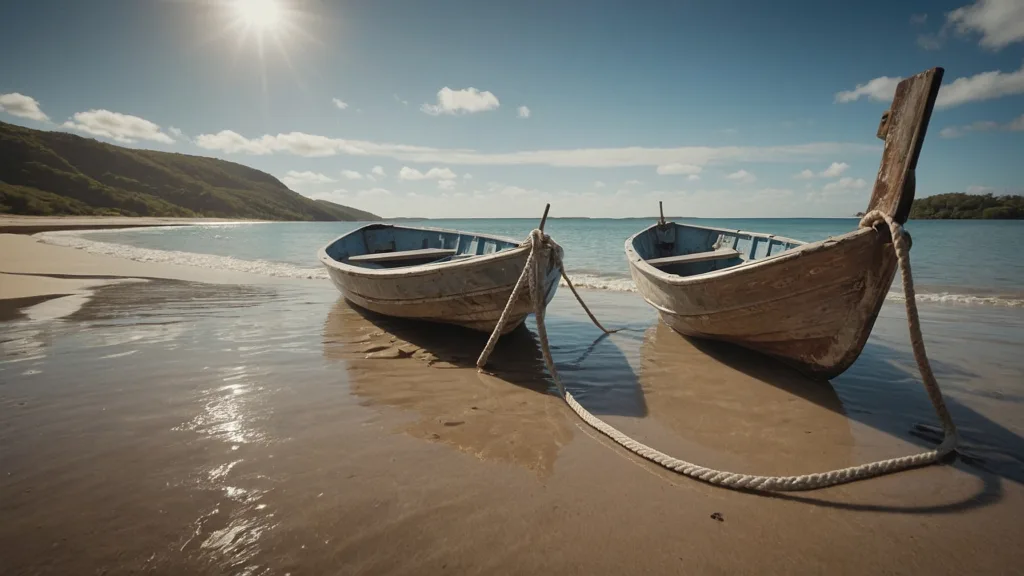
- Use a Heavy Anchor: A larger anchor is necessary to keep the boat securely in place on the beach, which is a key aspect of the proper technique for anchoring a boat.
- Angle the Boat: When beaching, position the boat at an angle to the shore so that it’s less likely to get caught by waves or currents, ensuring the proper technique for anchoring a boat is followed.
Understanding Anchoring Techniques Psychology
Did you know that anchoring isn’t just a physical skill but also involves psychological factors? The proper technique for anchoring a boat isn’t solely about the right tools and equipment—it also includes understanding how your mind perceives risk, the environment, and your boat’s movement. Anchoring requires a blend of both physical and mental awareness, where decisions are made not just based on the situation at hand, but also on how you interpret it.
For example, some boaters feel more comfortable anchoring in familiar spots, even if the conditions are slightly less than ideal. This behavior can stem from the psychological comfort of being in a known environment, even when it might not be the safest or most appropriate place to anchor. It’s easy to fall into the habit of anchoring in spots that feel familiar or where you’ve anchored before, despite changes in wind, current, or tide. This is a prime example of how your psychological biases can influence your boating decisions.
Also Read: How to Install a Mooring Buoy: 5 Best Points You Must Know
However, it’s important to acknowledge these biases and make decisions based on the current conditions rather than simply on what feels familiar. The correct approach involves staying objective and assessing the situation based on the water depth, the bottom type, wind direction, and any potential hazards in the area. The proper technique for anchoring a boat relies on a mindset that prioritizes safety and risk management, rather than comfort or habit.
By developing a deeper understanding of how your mind impacts your anchoring decisions, you can improve your ability to assess situations and choose the best approach. Always take the time to properly evaluate the conditions and choose a location that aligns with safety standards, rather than defaulting to what feels easiest or most familiar. This mindfulness ensures that you always use the proper technique for anchoring a boat, no matter the circumstances.

Common Mistakes to Avoid When Anchoring a Boat
Even the most experienced boaters can make mistakes. Below are some frequent mistakes to be aware of when learning the proper technique for anchoring a boat :
Not Letting Out Enough Scope:
This is a major mistake that leads to poor anchor holding. Remember, you need at least 5-7 times the depth of the water for the anchor to set properly, which is part of the proper technique for anchoring a boat.
Not Checking for Swing Room:
Make sure there’s enough space for your boat to swing without hitting anything. Always check the area around you before you drop anchor to ensure proper anchoring practices.
Dropping Anchor Too Quickly:
Let the anchor down slowly to avoid a jarring motion that could cause it to drag. This is a crucial step in the proper technique for anchoring a boat.”
Conclusion
Mastering the proper technique for anchoring a boat is one of the most essential and rewarding skills you can develop as a boater. Whether you’re using advanced anchoring techniques for a yacht or following simpler yet highly effective methods for a sailboat, good anchoring practices are key to ensuring both your safety and your enjoyment on the water. A well-executed anchor setup can make the difference between a relaxing day on the water and a stressful or dangerous situation.
By learning the basics and perfecting techniques like anchoring from the bow, along with exploring specialized approaches such as storm anchoring techniques, you’ll gain the confidence to handle any anchoring situation, no matter what the conditions are. Whether you’re anchoring in calm, clear waters or braving a sudden storm, proper anchoring techniques are your first line of defense. Keep practicing, stay vigilant, and always anchor with care to avoid mishaps.
As you gain experience, you’ll discover the nuances of anchoring, from the simplest approaches to more advanced methods like yacht anchoring techniques and boat beach anchoring techniques. By now, you should have a deeper understanding of what the proper technique for anchoring a boat involves—whether it’s choosing the right anchor, determining the appropriate scope, or knowing how to handle tricky situations. The key to a successful boating experience is preparation and the ability to anchor safely, no matter the circumstances. Stay prepared, stay anchored, and let your boating adventures unfold with smooth sailing ahead.
FAQS
How to do proper anchoring?
To anchor properly, follow these steps: 1) Choose a suitable location with enough depth and no obstructions. 2) Lower the anchor slowly and ensure it lands firmly on the bottom. 3) Let out enough anchor line (3-5 times the water depth). 4) Slowly reverse the boat to set the anchor. 5) Check that the boat is secure by testing the anchor’s hold.
What are anchoring tactics?
Anchoring tactics include:
Traditional: Drop anchor with enough line.
Storm: Use extra anchors in bad weather.
Bow & Stern: Anchor both front and back.
Mediterranean: Anchor front, secure stern to dock.
Swinging Room: Ensure space to swing freely.
What is an anchor strategy?
An anchor strategy is a plan used to securely position a boat using an anchor, ensuring it stays in place under various conditions. It involves selecting the right type of anchor, anchoring techniques, and positioning to prevent drifting due to wind, currents, or tides.
What is the safest method of anchoring?
The safest method of anchoring is properly setting the anchor by following these steps:
Choose a safe location with enough depth and no obstructions.
Lower the anchor slowly to avoid damaging it or the seabed.
Let out enough chain/line—about 3-5 times the water depth.
Reverse slowly to set the anchor firmly into the bottom.
Check for a secure hold by testing the anchor’s grip.
This ensures your boat stays securely in place, even in changing conditions.
How to anchor in 100 feet of water?
To anchor in 100 feet of water:
Choose a clear, safe spot.
Drop the anchor slowly.
Let out 300-500 feet of anchor line.
Reverse to set the anchor.
Check that the boat is secure and not drifting.


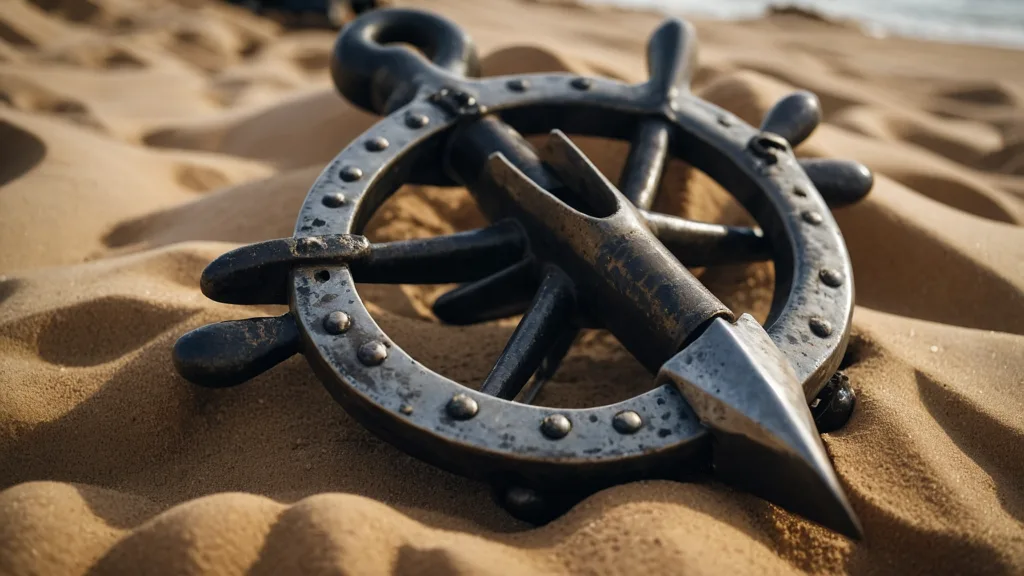
One Comment